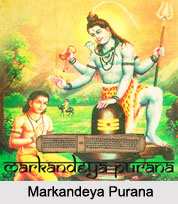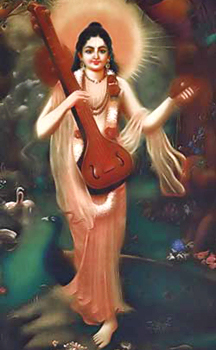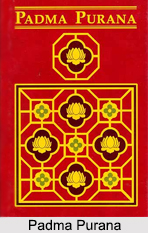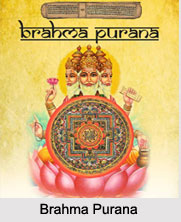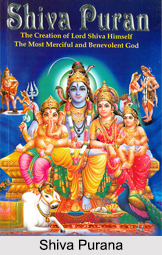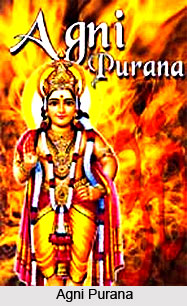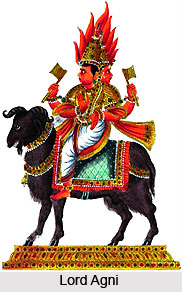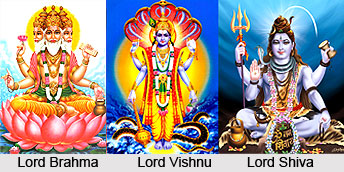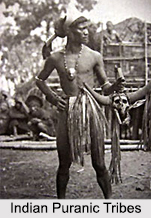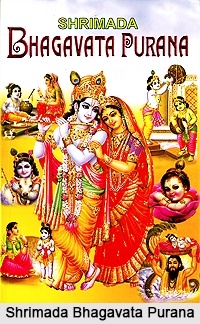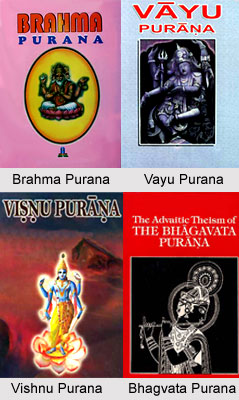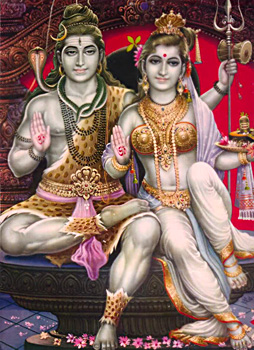 The Swayamvara of the daughter of the mountain that is Parvati was celebrated on the lofty peak of the Himavan filled with hundreds of lofty chambers. The Himavan, the king of the mountains, an expert in meditation came to know that his daughter had already chosen Lord Shiva as her husband but still the lord of the mountains decided to organise the Swayamvara of his daughter according to the norms. Brahma Purana says that the most excellent king of the mountains littered his land with precious gems and organized the Swayamvara ceremony very carefully. And immediately after the Swayamvra of his daughter was announced Devas and others, the residents of all the worlds came there assuming divine forms and dresses.
The Swayamvara of the daughter of the mountain that is Parvati was celebrated on the lofty peak of the Himavan filled with hundreds of lofty chambers. The Himavan, the king of the mountains, an expert in meditation came to know that his daughter had already chosen Lord Shiva as her husband but still the lord of the mountains decided to organise the Swayamvara of his daughter according to the norms. Brahma Purana says that the most excellent king of the mountains littered his land with precious gems and organized the Swayamvara ceremony very carefully. And immediately after the Swayamvra of his daughter was announced Devas and others, the residents of all the worlds came there assuming divine forms and dresses.
The various guests who had come to the Swayamvara of Parvati were the lord of the Devatas Indra who had reached the place riding on his Airavata. Lord Surya had reached the place mount on his royal chariot.
Aditya came there in his chariot equal in lustre to fire and solar splendour. His rays were those of the midday. His ear-rings brightened up by jewels, dazzled all. Yama, the god of Death had reached the place on his buffalo. Lord Yama was unparalleled in brilliance, strength and power of demanding obedience. In prowess he was comparable to none. The Fire God or Lord Agni had reached the place wearing grand apparel and he stood there superior in glory to all the other devatas who were present there.
Kubera, the god of wealth had also attended the Swayamvara ceremony of Parvati. Besides the god of moon, Lord Vishnu, Aswinis, the sons of Diti and several other Devas, Gandharvas, Yaksas, Serpents and Kinnaras too came there, riding in aerial chariots and they were clad in different sorts of beautiful apparel.
Brahma Purana mentions Uma, the daughter of Himavan, the lord of mountains was seated in an aerial chariot covered with gold and studded with jewels. She was fanned (on either side) by the waving chowries. She held a garland of sweet-scented flowers of all seasons. She stood ready to proceed ahead quickly. And as the Uma stood there in the assembly of Devas, holding the divine garland Shiva assumed the form of an infant (with five tufts of hair) with a desire to test her again.
All of a sudden, Parvati saw the infant lying. By means of meditation she understood who it was and took him up with great delight. Thus Parvati or Uma of pure thoughts and great knowledge chose her husband in the Swayamvara. At this all the other Devatas present in the Swayamvara were stunned but soon they all realised that it was Lord Shiva, the cause of the universe.
Then all those heaven-dwellers who were stunned, bowed to Lord Shiva with their minds purified by emotional fervour. Shiva, the lord of Devas was pleased with them. Finally In the presence of heaven-dwellers the delighted goddess placed garland at the feet of the lord of unmeasured lustre. After Parvati had placed the garland around Shiva the Devas bowed to the lord and the goddess, with their heads resting on the ground.
Finally on the request of Lord Brahma all arrangements for the marriage of Shiva Parvati were made. As part of the arrangement a city was created by Lord Brahma. It was made splendid by different sorts of jewels, precious stones and gems of various colours; gold and pearls came in their embodied form and decorated that excellent city. The ground was wonderfully paved with emerald. It was adorned with columns of gold. Shining crystals constituted the walls. Pearl necklaces were suspended from them. At the entrance to that beautiful city, raised platform was constructed for the marital rites. That place of noble Shiva, lord of Devas, shone well. The moon and the sun assumed the form of two brilliant gems and rendered the place warm and cool.
The wind god attended the marriage ceremony of Shiva-Parvati and expressed his devotion to the lord. The others who attended the marriage ceremony were the four oceans, Indra and other Devas, the celestial rivers, the great terrestrial rivers, Siddhas, sages, Gandharvas, Apsaras, Nagas, Yaksas, Raksasas, aquatic and Sky-bound birds and animals, Kinnaras, Caranas, Tumbaru, Narada, Haha, Huhu and the singers of Saman hymns brought with them other sorts of gems and came to the city.
As part of the marriage ceremony ascetics and sages, experts in singing Vedic Mantras chanted holy Mantras of marriage rites with delighted minds. Mothers of the universe and the celestial virgins began to sing joyously in the course of that wedding ceremony of the lord. The six seasons were simultaneously present in their embodied forms at the marriage function. They spread pleasing scents everywhere.
Brahma Purana narrates that Lord Brahma himself had performed the marriage rites of Shiva-Parvati. He had bound the hands of Shiva and Parvati together in the Yogic knot. The fire-god stood there with palms joined in reverence. The auspicious Mantras of Vedas assumed physical forms and were present at the marriage. The ghee like nectar was dropped into the fire and the binding knot was untied. Finally the marriage rite of Lord Shiva and Parvati was over.

